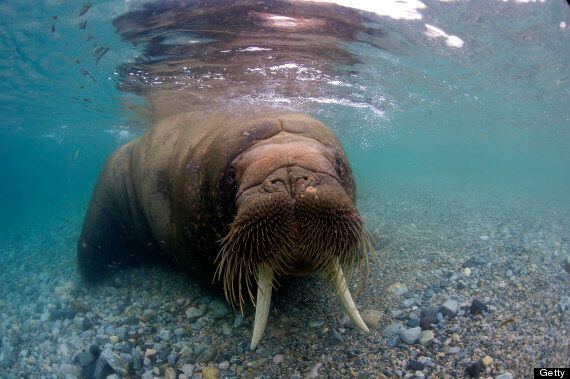Forced ashore by the disappearance of Arctic sea ice over their feeding areas, an estimated 10,000 Pacific walrus have been pictured bunched along a beach.
Scientists with the National Oceanic and Atmospheric Administration (NOAA) photographed the poor creatures packed onto a beach and warned the lack of ice could leave the animals at great risk.

The walrus have been coming to shore since mid-September
Walrus historically use sea ice to rest as they dive for food on the ocean bottom – but sea ice in recent years has receded far beyond the shallow outer continental shelf.
The gathering of walrus on shore is a phenomenon that has accompanied the loss of summer sea ice as the climate has warmed.
Now, the creatures are crammed onto a tiny stretch of Alaskan beach 700 miles northwest of Anchorage because, scientists say, global warming is melting away their usual habitats.
As the walruses are so tightly packed together, scientists have warned young animals are especially vulnerable to stampedes triggered by a polar bear, a human hunter or a low-flying airplane.

As temperatures warm in summer, the edge of the sea ice recedes north
The U.S. Fish and Wildlife Service has taken steps to prevent stampedes on the beach. The AP explains that the agency works with nearby villages to keep people and planes, which can cause stampedes, away from the scene.
The carcasses of more than 130 mostly young walruses were counted after a stampede in September 2009 at Alaska's Icy Cape.